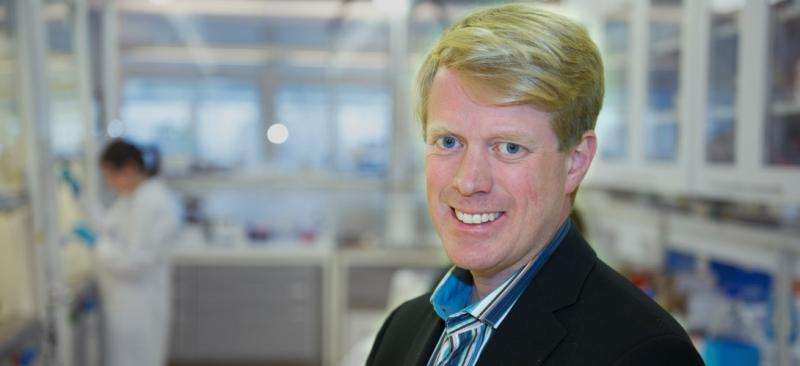Sleep proteins in new DNA repair mechanism

Researchers at Karolinska Institutet and universities in Hong Kong have found a new molecular mechanism for DNA repair involving an unexpected interaction between the PARP-1 protein and sleep proteins in humans. Their discovery is presented in the scientific journal Molecular Cell.
While it is a well-known fact that sleep is important to the body's recovery and healing, knowledge of the molecular mechanisms that make this possible is incomplete. In the present study, the researchers show that a protein known as PARP-1 bonds and interacts in humans with another protein called Timeless and that together they control the repair of DNA in the cell nucleus.
"Timeless is involved in the regulation of the body's circadian rhythm," says principal investigator Thomas Helleday, PhD, Professor of chemical biology at Karolinska Institutet's Department of Medical Biochemistry and Biophysics, and also affiliated to the SciLifeLab facility in Stockholm. "We already knew that PARP-1 and Timeless each plays its own part in cell survival, but not that they interact in this interesting manner."
Professor Helleday and his team have long specialised in PARP proteins and their role in DNA repair, knowledge that is important to cancer prevention. Their work with PARP inhibitors has produced a new therapeutic principle for breast and ovarian cancer.
Without damaging normal cells
"This therapeutic principle has now been approved as a drug in the USA and Europe for advanced ovarian cancer, which is wonderful," continues Professor Helleday, who is also affiliated with Stockholm's SciLifeLab. "The new treatment kills only the mutated cells without damaging normal cells."
However, it is not yet clear just what contribution this newly discovered link between PARP and the circadian rhythm can make to cancer treatment.
"Maybe our results can help to explain the side-effects that some patients can show," he says. "However, we keep a very open mind in our lab and I'm constantly surprised by all the functions and roles that PARP proteins have in the cell."
More information: "Timeless interacts with PARP-1 to promote homologous recombination repair." Molecular Cell, 1 October 2015 issue, online 3 September 2015, DOI: 10.1016/j.molcel.2015.07.031

















